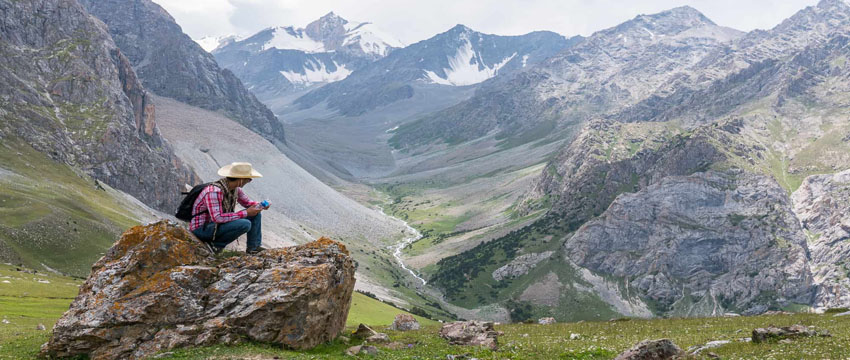With its intense, continental atmosphere, Kyrgyzstan is particularly a seasonal destination. Except if you are travelling to the country for business purpose, most visitors tend to come between May and October.
For those who are intrigued is essentially by outdoor adventures, trekking season is somewhat shorter – somewhere in between early June and mid-September.
The period from mid-July to late August is by a long shot the busiest with visitors travelling from different countries, somewhat due to the atmosphere and mostly because of this being the Prime European summer holiday season.
Given complete liberty of decision in choosing when to come, it truly relies upon precisely what the guest wishes to do and where they need to go. If it is snow that the visitor is actively seeking, for winter sports like skiing or snowboarding, then January and February are generally the best months to come, although early January can get very busy with winter vacation visitors from Russia and Kazakhstan.
Climate
Kyrgyzstan’s climate is partly influenced by its mountains and partly by its continental location far from any ocean.
For the most part, it is continental, with cold winters and warm summers. In the lowlands, the temperature ranges between –4°C and –6°C in January and between 16°C and 24°C in July.
The coldest temperatures are in the mountain valleys where –30°C is not uncommon and a record of –53.6°C has been measured, although –14°C to –20°C is more usual.
The Extremes In Kyrgyz Climate
In the summer in the Fergana Valley, the average temperature in July is around 27°C, although temperatures frequently reach the low 40s. Even in the summer, temperatures may drop as low as –10°C at night on the mountain peaks.
Of the major urban centres, Naryn has by far the most extreme climate, with an average minimum temperature in January of –19°C and an average maximum July temperature of 25°C.
The Sometimes Moderate Climate
Both Bishkek and Osh have much milder winter temperatures but warmer summers. Generally, temperatures are far less extreme in the region of Lake Issyk-Kul, where the presence of a large body of non-freezing, slightly saline water has a moderating influence on the local climate.
Rainfall is generally fairly low throughout the country – as little as 100mm per annum on the southwest shore of Lake Issyk-Kul, to around 2,000mm in the mountains above the Fergana Valley.
Average Temperature Ranges
The national average is 380mm, with March to May, and October and November usually the wetter months. There is sometimes heavy snowfall in winter. Clear skies are common and Kyrgyzstan averages more than 300 sunny days per year.
Recent years have brought a number of unusual climatic events, which are possibly linked with worldwide climate change and glaciers receding: droughts in the Fergana Valley and elsewhere, low winter snowfall, unusually heavy rain in the spring and an increase in the water level of Lake Issyk-Kul, despite a preceding trend in which the water level was dropping.
Late Arrivals Of Summers And Winters
Late-summer is really an exceptionally lovely time to be in Kyrgyzstan, particularly if going to southern destinations of modest elevations, for example, the Lake Sary-Chelek area and Arslanbob, which has its walnut harvest during this season. Evenings might be very cool however there are warm days with clear blue skies.
Late snowfall can mean many passes and even parts of the main Bishkek–Osh highway are under snow until mid-May. The months of April, May and June have the highest amount of rainfall, and this, coupled with melting snow, can sometimes pose risks of landslides and avalanches.
Visit Kyrgyzstan to experience its continental climate. Call us or visit our website to learn more about the best time to visit Kyrgyzstan.
